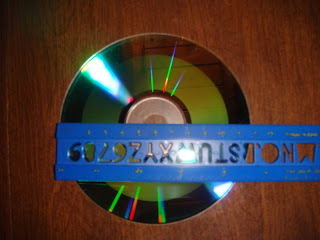
Birding is one of my family's favorite past-times. The
National Audubon Society Field Guide to North American Birds (Eastern Region) sits on the sill of a window in our living room that overlooks our feeders. As the birds fill their bellies, we like to identify them. My young daughters are becoming familiar with those that are most common in our neck of the woods: Chickadee, Nuthatch, Titmouse, Goldfinch, Blue Jay, Robin, Woodpecker, Morning Dove, Crow, and Wild Turkey. The book comes in handy when we are trying to distinguish
which type of woodpecker is at our feeder or when we have a rare sighting, like that of the Scarlet Tanager, the Pine
Grosbeak, a Ring-necked Pheasant, or an owl. In addition, my girls are learning the calls/songs of the birds. I get great pleasure out of listening to my girls reply to a birdsong they've just heard.
A favorite chore around our house is feeding the birds. We lug the big bag or bucket of food to the feeders, then use a small cup to overflow the feeders. My daughters, ages 3 and 1, enjoy grabbing
hand fills and scattering the food about for the ground feeders. They also like squishing the suet into its cage and helping mom or dad hang the cage back on its branch. There's some pride and ownership they have developed in picking out the bird food, putting it in the feeders, and then witnessing the birds gobble up what's been provided them by our family. Yes, I know the bears are waking up and there's a possibility the bird food will bring them to our yard, but we cannot resist feeding our feathered friends. Not to mention, the love my girls have developed for the birds is heart warming; when we drive away from the house my girls say, "Goodbye birdies, see you soon." Then returning home they shout, "Hello birdies!" Like I said, we can't resist.
Below, please check out some ideas for having bird fun of your own with your young ones or students.
-Why are some birds here in the warmer weather, but not the cold? Where do they go?
-Why do different birds like
different types of food? What else do they eat besides bird food?
-Check out the beaks of some different birds. Why are their beaks shaped differently?
-Why are most male birds brightly colored while the
female color is more subdued?
-Why do birds come in different shapes and colors?
-Why do birds' calls/songs vary? What do their calls/songs mean?
Identification:-Using a resource, such as the field guide mentioned above, identify species, either by sight or sound or both. Birds can also sometimes be identified by their nest and/or eggs.
-If child/student has some familiarity with birds, have them make a guess as to what he/she is seeing. Then,using a website, such as
Birds of North America http://identify.whatbird.com/mwg/_/0/attrs.aspx, have him/her type in the guess and see what's revealed.
-For very young children (my 1 year old does this) have them identify birds by color. For example, when seeing a Goldfinch have them say, "Yellow bird."
Tracking, Patterns, and Measurements:-Develop a bird log. List all birds seen during the different seasons. Then, decipher similarities and
differences between seasons.
-List all the birds child/student sees at a specific feeder and note the time of day. At the end of the day, week, or month, examine the list and notice any patterns (such as what birds come in the morning or evening).
-Measure the amount of bird food being eaten: Record how many ounces are put into a specific feeder and note how many days until it's empty. For example, 24 oz/3 days. (With this formula, child/student would learn 8oz are being eaten per day.)
-Make a chart with colors across the top (Blue, Red, Brown, Gray, Yellow, etc.) Next, list each bird seen under the appropriate color.
-For very little ones, simply have them count the birds they see in one day.
Fun and Games:-Smear a pine cone in peanut butter, then roll it in bird food and hang it from a tree branch.
-Imitate bird calls/songs.
-Bird fiction: Have child/student tell the story of where a bird goes and what it does once it leaves the feeder. For example: Charlie the Chickadee is flying to the stream for his bath. He wants to get cleaned up before flying to the neighbor's big pine tree and visiting with the Blue Jay babies that hatched yesterday. (You get the idea!)
-Go outside for a "Bird Evidence Scavenger Hunt". Look for tracks, nests, feathers, and eggshells.
Whatever you do, enjoy the birds!





































 Story Starter
Story Starter
